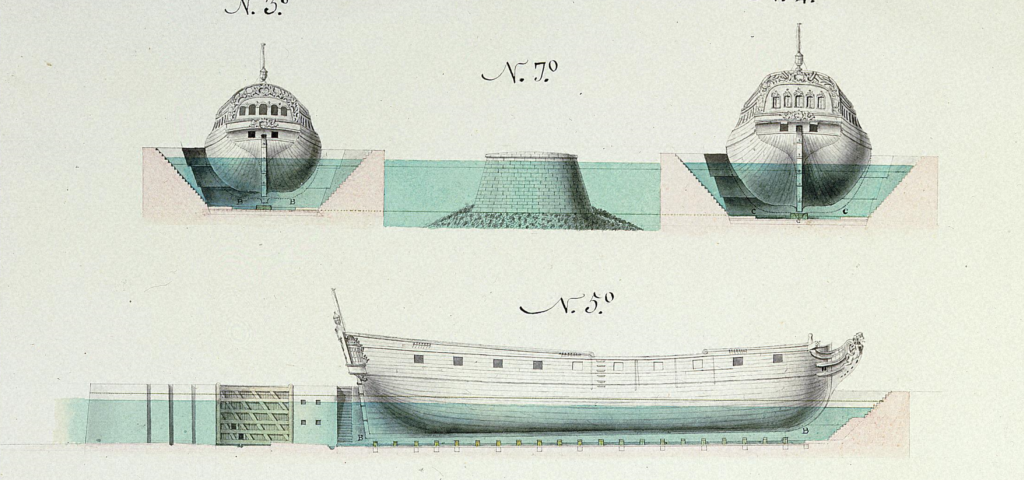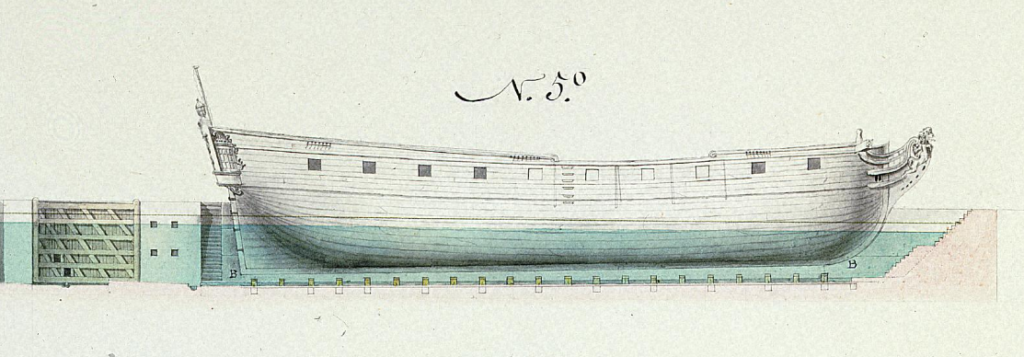LA CANTABRIA

- Name: La Cantabria
- Type of vessel: mail, ocean liner
- Flag: Spain.
- Date of sinking: 20 February 1773
- Cause: grounding, fog
- Location: Corno point, next to Cape Vilán (Camariñas). Still to be located
- Diving level: –
- GALP territory: Costa da Morte (Coast of Death)
HISTORY
The costly loss of a mail ship of the Spanish Empire

In the 18th century, Spain was the largest empire on the planet with a presence in four of the five continents. It was sustained by an extensive network of maritime communications and, by extension, the survival of the Spanish geopolitical power depended on its good conditions, which required significant resources.
A Coruña and Cádiz were the Peninsula ports in this communications network, which channelled all colonial traffic with New Spain between 1764 and 1789, and with New Granada between 1764 and 1778. On the first days of each month a mail boat would leave with goods for Havana, and every two months another mail boat would leave for the Río de la Plata.
In A Coruña (Galicia), the Correos Marítimos base was located in what was once the Tobacco Factory and had several mail boats associated with it.
Priority: speed
On 28 April 1770, the construction of the packet boats La Infanta, La Diligencia, La Cantabria and La Diana began in Bilbao. Their construction was completed just one year later, in May 1771. It is documented that 32 cannons were employed for these four ships, eight pieces per hull, a meagre crew in keeping with the priority given to speed to get to and from the New World in a short time.
Only one month after its launch, on 15 June 1771, the Cantabria left A Coruña bound for Buenos Aires, and returned on 1 February 1772. On its return from its second voyage, on 20 February 1773, it ran aground somewhere in the vicinity of Corno Point, near Cape Vilán (Camariñas).
It had departed from the city of Montevideo under the command of Captain Cosme de Bringas Careaga, a native of Portugalete (Vizcaya) and a resident of A Coruña, on a round trip that had taken it from the port of A Coruña to Buenos Aires and Montevideo.
It arrived off the coast of Galicia with very poor visibility, which lasted several days. The lookouts were stationed on the rigging to get their bearings. Faced with the risk of hitting the coast during the night, the captain gave orders to heave the boat to, so as to obtain a position of equilibrium and wait for the next day without the risk of running aground.
They were about to do so when at eight o’clock at night they hit the As Quebrantas shallows, some dangerous rocks in the estuary of Camariñas. The collision caused several leaks that flooded it. From this point, “they were filled with water to perish next to the mainland rock known as El Villano”, according to the documentation of the time.
At the time of the shipwreck it was carrying 57 people, including passengers and crew, of which only 6 sailors survived. Among the passengers was the governor of the Falkland Islands, Miguel de Bernarani, accompanied by two servants.
Immediate recovery of the cargo
Salvage work began immediately due to the valuable cargo of La Cantabria. Personnel from the Correos Marítimos and the Treasury from A Coruña were sent to direct the recovery of thirty bags of silver and gold coins, 16,000 hides, and the luggage and furniture of the passengers who were travelling back to the mother country with all their belongings.
Free divers, sailors and labourers managed to salvage numerous effects from the cargo together with passenger belongings.

Letter from the Correos Marítimos de A Coruña company personnel after the shipwreck of La Cantabria to report on cargo recovery efforts (transcription):
“Camariñas, 26 February 1773
… My Lord, after I informed you yesterday of my arrival at this port with the rest that was offered to me, I tried to find out the number of papers, money, jewels and fragments that had been collected by order of Don Manuel Martinez del Busto, sub-delegate of the Navy there; and to collect those that the sea is throwing out from those contained in the mail frigate named La Cantabria, which was wrecked on the 20th of this month at eight o’clock at night between the Virgen del Monte and the Villán de Camariñas, three quarters of a league from this town ….”
List of the deceased in the wreck of La Cantabria:
Captain: Cosme de Bringas
2nd pilot: Josef del Otero Fuente
Boatswain: Juan Fernández
Surgeon: Josef de Fraga Caamaño
Assistant Pilot: Luis Fernández Tapia
Carpenter: Ignacio de Alday
Guard: Juan Puch Marinero
Caulker: Juan Manuel de Avilés
Caulker Sailor: Juan Morán
Caulker Sailor: Francisco Fernández Casariego
Caulker Sailor: Pedro Pavellón
Caulker Sailor: Josef Luis de Santurián
Gunner: Anastasio de Cariaga
Gunner: Fernando Marques
Gunner: Josef Zalvidea
Gunner: Thomas Hernández Nieves
Gunner: Domingo de Osma
Gunner: Francisco Aguirre
Gunner: Antonio Bueno
Gunner: Gregorio Flores Villamil
Gunner: Félix Renis
Gunner: Francisco Cordera
Gunner: Bartolomé Fernández
Gunner: Miguel Romeu
Gunner: Eugenio de Ochoa y Hurcasitas
Gunner: Francisco Fonnegra
Sailor: Antonio Albuerne
Sailor: Fernando García Sobrino
Sailor: Gabriel del Rivero
Sailor: Francisco Pica Marinero Francisco Valmón
Sailor: Josef García
Sailor: Miguel Carvajal
Sailor: Juan Fernández Prieto
Cabin boy: Andrés Bastón o Gastón
Cabin boy: Domingo Mantiñán
Cabin boy: Josef Piñeiro
Cabin boy: Santiago Álvarez Page Josef Paradela
GALLERY



